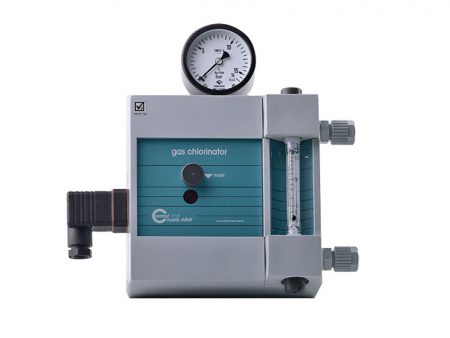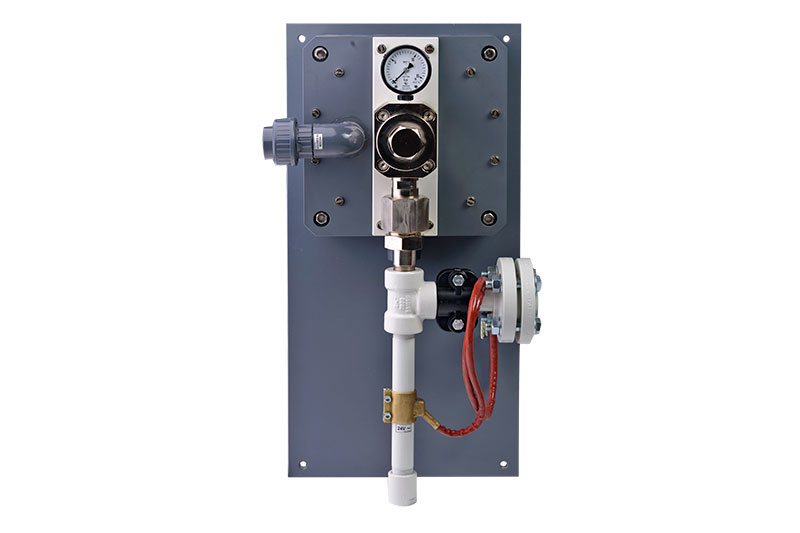Van giảm áp clo Control matic model: M3480C
The M 3480 C gas chlorine pressure reducing valve is used to sink down the unregulated gas pressure to a steady operating gas pressure. The pressure reducing valve secures pressure independent operation of Vacuum regulator and prevents, in relation to pressure and temperature changes, liquefaction of chlorine gas.
GENERAL
The M 3480 C gas chlorine pressure reducing valve is used to sink down the unregulated gas pressure to a steady operating gas pressure. The pressure reducing valve secures pressure independent operation of Vacuum regulator and prevents, in relation to pressure and temperature changes, liquefaction of chlorine gas.
OPERATION PRINCIPLE
Through the adjustable screw the valve cone can be lifted above the valve seat within defined limits, so that the operating pressure can be set to any value between 2 and 3 bar for Cl2. Pressure fluctuations are compensated by the spring-loaded double diaphragm system, so that the operating pressure is kept constant (at constant flow).
If the operating pressure exceeds the set value, the spring-cone diaphragm system enables the valve to close.
INSTALLATION
The gas chlorine pressure reducing valve is always mounted in a chlorine system, so the installation depends very much on the system. When taken from the packing box, the valve must be mounted as soon as possible; in other case, it must be stored in a dry place. No moisture should enter the valve! A valve has two flanges, is mounted in the chlorine gas system pressure line with counter flanges and tightens up with screws. The valve must be mounted to the wall or to a construction with the attached L-piece. If the pressure gauge is mounted onto the valve, than it must be mounted before the valve is mounted. To do that, remove the plug screw. Prepare the pressure gauge and put some special chlorine gas resistant glue on the screw. Screw the pressure gauge in and remove the surplus glue with the rag. Watch how the scale is turned. Now the correct pressure can be set.





